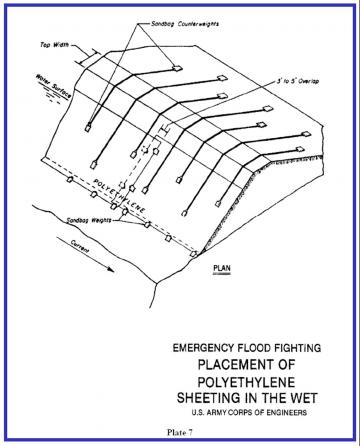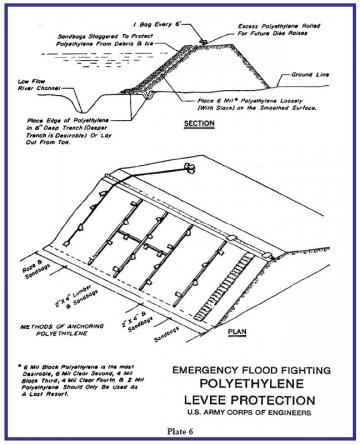
Disclaimer: The Missouri Department of Natural Resources is not responsible for any harm or accident caused by the construction or use of a sandbag levee, including failure of such levee and including failure of the levee to withstand floodwaters.
How to Fill Sandbags
Fill sandbags 1/2 to 2/3 full, tie at top so bag will lay flat when put in place. (Overfilled bags leave gaps in levee allowing water to seep through.)
Placing Sandbags
Sandbags should be placed flat on ground, overlapped, tamped into place and stairstepped.
Polyethylene
Polyethylene (poly) comes in rolls 20 ft. wide and 100 ft. long. It’s used to wrap sandbag levees to prevent seepage. Poly should be placed on downstream portion of levee first, then worked upstream with a two- to three-foot overlap. Poly is held in place with sandbags.
|
Height in Feet
|
Bags Required
|
|---|---|
|
1
|
05
|
|
2
|
10
|
|
3
|
21
|
|
4*
|
36
|
|
5*
|
55
|
Note: Preferred levee limit is 3 feet. Five feet is the practical limit of a sandbag levee. If a higher levee is needed, alternative means of construction should be considered.
Placement of Polyethylene


